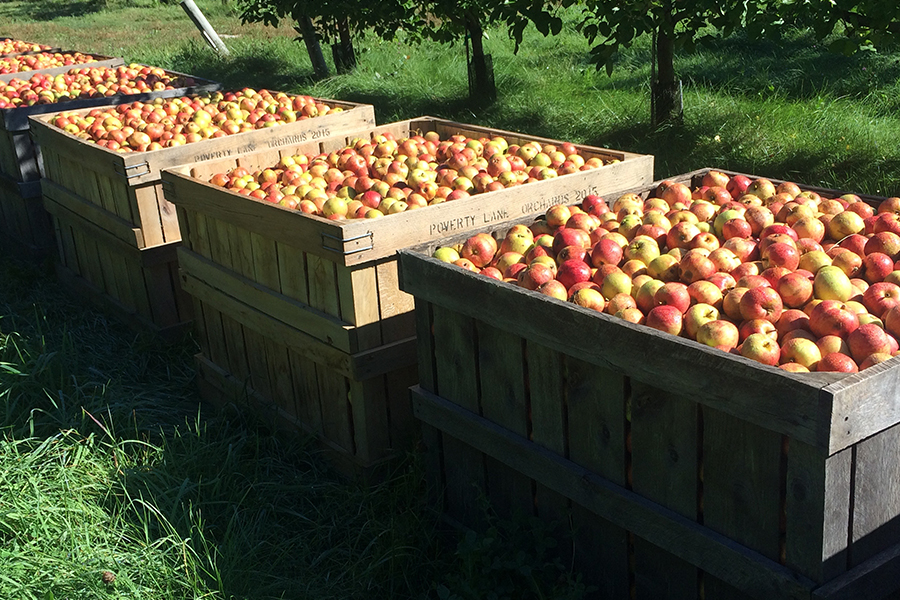Up here at Poverty Lane Orchards/Farnum Hill Ciders we grow all sorts of apples for all sorts of reasons. Delightful-tasting ones for eating, cooking and seasonal sweet cider, and weird-tasting ones for fermenting into adult-beverage cider. (Some of the delightful-tasting ones can also play a part in the fermented cider, but that's too much detail.) Here's some history.
Into the 1950’s, our fields belonged to three different dairy farms, all scattered along Poverty Lane in Lebanon, NH. By the early sixties, all three had quit dairy, and sold their land to one new owner. He planted those fields to main-crop New England apple varieties - McIntosh, Cortland, and Macoun.
Back then, many wholesale apples grown in New England were shipped to New England grocery stores. That regional market was a primary support for thousands of acres of commercial fruit growing in the Northeast. So when the current Wood family took over Poverty Lane Orchards in the 70s, it a small-to-mid-sized operation for New England. Big, old, multi-generation fruit farms dominated Northeast apple production. They or their shippers had standing relationships with retail stores in the region.
But then the patterns of apple-shipping and marketing changed, fast, and disruption hit the long-standing regional apple markets very hard.
Long story short, Northeast apple growing regions became targets for distant, export-oriented apple-growing regions: on the west coast (Red Delicious) and in the southern hemisphere (Granny Smith, Gala.) These shipments came into New York and New England markets, complete with promotional programs -- store advertising, magazine ads, expert publicists, TV ads. The traditional, regional growers had never needed these powerful sales tools, so they didn't have a ready response. So they began losing a battle for shelf space in grocery stores.
Managing a produce (fruit and vegetable) department in a retail store is a nerve-racking job. If your products aren't promptly purchased, they rot! To oversimplify: if a faraway supplier offers you shiny (brushed or waxed) apples that your customers have seen on TV, the un-polished local McIntosh and Cortlands will lose a lot of space on your shelves. This trend grew year after year, region-wide.
So what happened to Northeastern apple land? Well, real estate values near population centers were rising fast. So, often with great sadness, apple growers sold their land -- for "growing houses." The biggest, oldest orchards, nearest to population centers, naturally brought the highest prices from developers.
That's how our apple operation has become one of the biggest (and oldest) in the region -- just because the bigger, older ones became building lots, and our place kept growing apples. But not just Macs and Corts...
By the 1980s, we started growing apples most of our fellow citizens never heard of, including many that nobody eats! We didn't sell good orchard land to developers, because we thought that with time, those varieties promised an agricultural future here. Some were heirloom varieties of exceptional flavor and quality for eating and cooking. Others were bittersweet and bittersharp varieties grown for fermenting into cider, the way wine grape varieties are grown for fermenting into wines! We learned the complex arts and methods of fermenting apple juices into traditional adult beverages. We got a license to ferment alcoholic beverages. That's how Farnum Hill Ciders -- named after the hill where our home farm lies -- came into being during the '90's.
So! Our double identity emerged over years, from extreme changes in the fruit and real estate markets, the patience of farm bankers, and determination to not, not, not "grow houses."
For seasonal open hours, click here. To arrange a visit outside regular hours, call several days ahead! We can’t always accommodate, but we’ll try.


